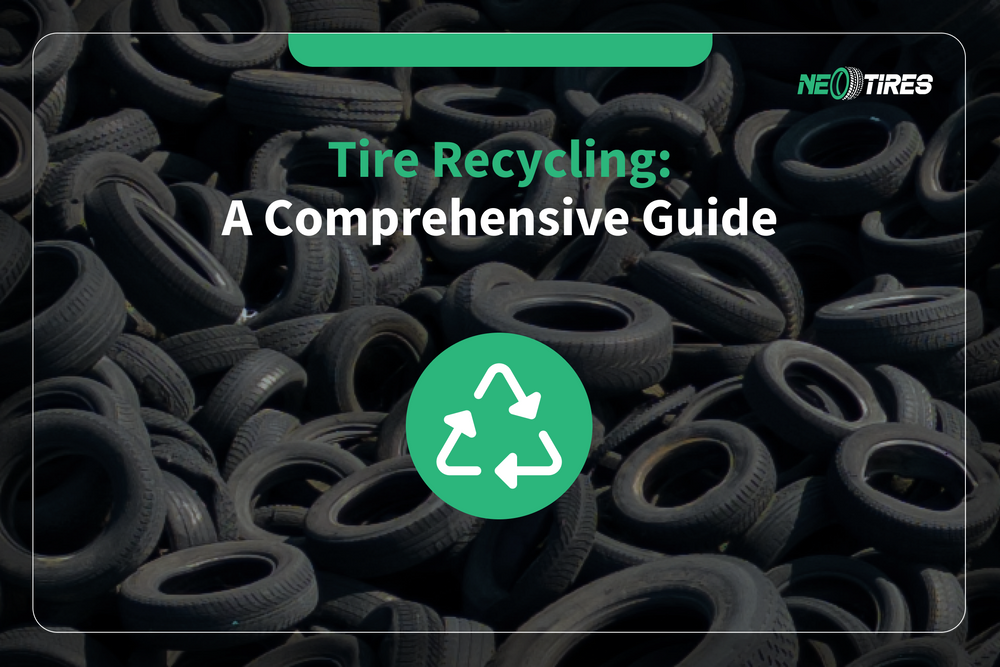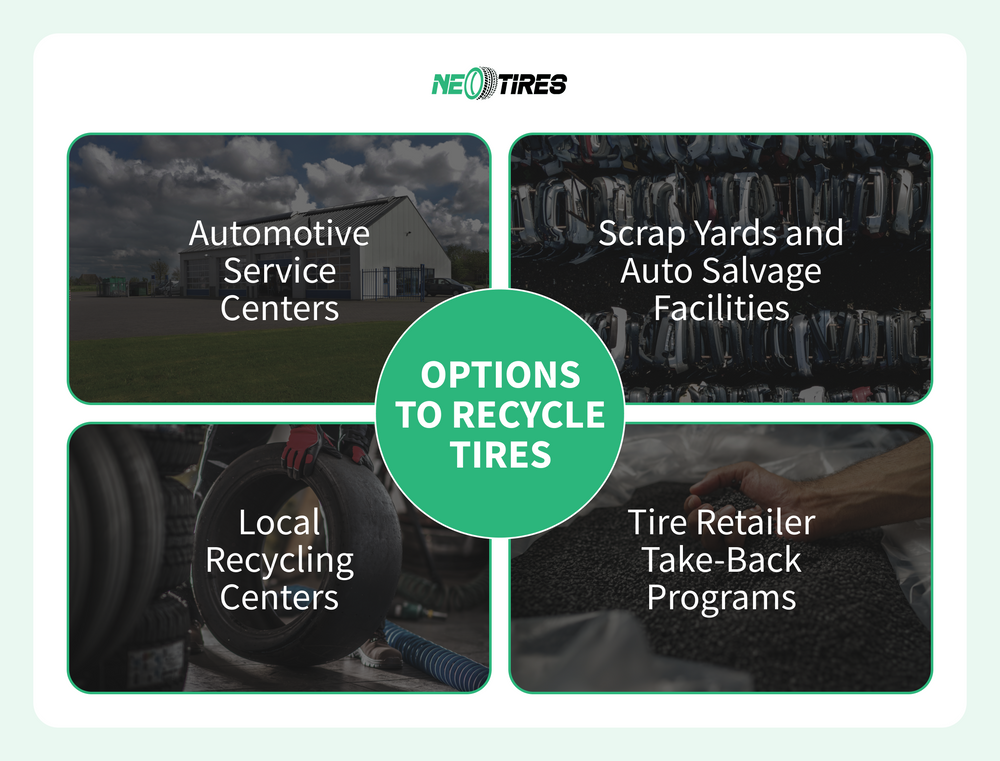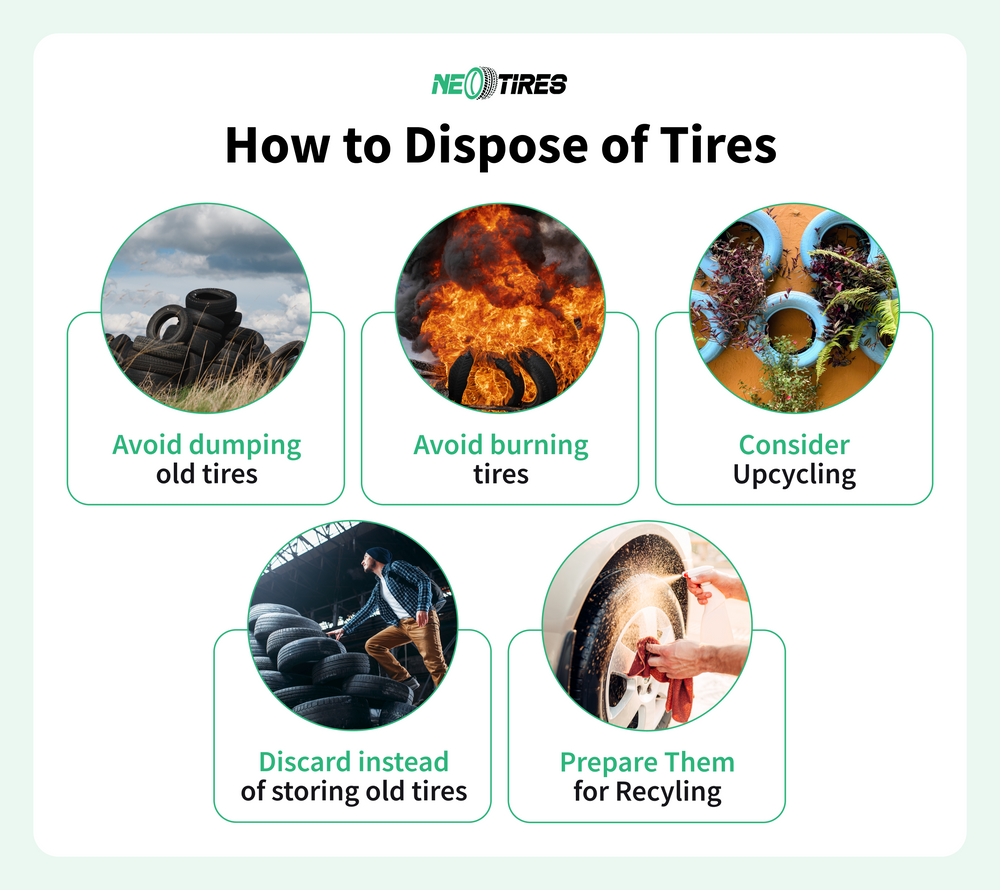According to USTMA data, the amount of scrap tires reached over 290 million annually. Today's article focuses on the importance of knowing what a US driver can do with used tires to minimize their environmental impact.
Tire recycling is part of the broader e-recycling movement, which aims to educate and empower consumers to reuse various types of waste, including plastic, electronics, and any other material that harms the environment.
Tire Recycling Statistics in the United States
Tires become damage factors once their shelf life expires. According to USTMA, the generation of scrap tires reaches 290 million annually, while the scrap of recycled tires reaches 76%. In 2022 research, the EPA showed that about 25% of used tires are used in ground applications, whereas 43% of old tires turn into tire-derived fuel.
| US Tire Recycling Statistics | Quantity / % | Source |
| Annual scrap tire generation | 290 million | USTMA (2021) |
| Percentage of scrap tires recycled | 76% | USTMA (2021) |
| Tires used in ground rubber applications | 25% | EPA (2022) |
| Tires used as tire-derived fuel | 43% | EPA (2022) |
Tire Recycling: Statistics of annual scrap tire generation and % of recycled tires
How to Recycle Tires: Options for US Drivers
US drivers have at least five sources they can address to reuse tires and contribute to tire waste optimization. These include finding Local Recycling Centers, Municipal Collection Events, Tire Retailer Take-Back Programs, Scrap Yards and Auto Salvage Facilities, and Automotive Service Centers.
- Local Recycling Centers: Local waste management authorities have recycling facilities accepting old tires;
- Municipal Collection Events: Local governments organize special events to collect waste material, including old tires;
- Tire Retailer Take-Back Programs: Tire shops can offer information about possible take-back service programs when buying new tires. Many reputable names like Michelin, Bridgestone, or Goodyear embrace these initiatives and participate in tire-recycling programs;
- Scrap Yards and Auto Salvage Facilities: Some US states use specialized yards for old tires to be repurposed;
- Automotive Service Centers: Chains such as America's Tire and Discount Tire receive old tires without purchasing new ones.
Where to Get Rid of Old Tires: Local Resources
To discard old tires for proper disposal, you can consider Local Government Websites, Earth911, Tire Retailer Websites, and Community Recycling Apps.
What Do Tire Shops Do with Old Tires?
Tire shops enrolled in old tire recycling programs collect a larger number of old tires. Then, the shops transport the tires to their recycling partners or directly to recycling facilities. The waste facilities sort the material according to tire size, condition, and the purpose of subsequent recycling. Depending on the recycling purpose, old tires can become new products, be retreaded, shredded, or separated from their steel belts.
How to Dispose of Tires: Best Practices
To dispose of or discard your old tires in a friendly manner, consider the following practices: avoid dumping old tires or burning them, find old tires a use instead of storing them (decorative projects, outdoor furniture, pet beds), or consider upcycling (erosion control, athletic surfaces, playground).
Recycled Tires: Innovative Uses and Applications
Tires can serve as the basis for various products and are used in industries like road construction, roofing materials, or railroad ties. Old tires in road construction rubber serve as an auxiliary material to optimize drainage. In addition, tire rubber is used directly in the composition of the asphalt, called "rubberized asphalt," which increases the durability of the road.
Due to its flexibility, tire rubber is a shock-absorbing material useful for safe sports areas and playgrounds. When mixed with other components, it provides a slightly cushioning effect. Rubber mulch extracted from tires is widely used for roofing, floor mats, and other construction materials.
Recycled tires are frequently turned into composite railroad ties. The material processed from the tires increases the durability of the final product. Several civil engineering applications use shredded tires to prevent soil erosion. Tire recycling is also helpful for artistic purposes like renovating playgrounds to furniture artwork.
Conclusion
Our duty as citizens is to know how to discard old tires to contribute to protecting the environment and participating in resource conservation. The various recycling programs make the decision to discard old products the right way much easier. Thus, automobile tires can become valuable materials after their shelf life ends instead of presenting a risk to the environment.
Ready to Upgrade Your Ride with New Tires?
While recycling old tires dramatically contributes to the environment, it is equally essential to find new, high-quality tires that match your driving needs.
At NeoTires, we make finding new tires easy with a broad product selection and direct-to-your-door delivery service. Browse our tire catalog for affordable prices on top-quality tires that improve your driving experience. Contact us for professional assistance! We are one click away to help you find the best match!
Why Trust Us
NeoTires aims to improve every motorist's driving experience. To this end, our team offers optimal prices for various tire categories and qualified support on all tire-related topics.
We also aim to increase drivers' awareness of the importance of choosing the right tires to enhance their performance and safety on the road. For this, we study the research provided by reliable sources in this industry, such as Consumer Reports, the Tire and Rubber Association, USTMA, and the NHTSA.
Our philosophy revolves around the optimal balance between price and quality, unbiased content, constant team development in the field, and driver needs satisfaction. Check out customer reviews on Trustpilot and learn more about our culture. Dive safe and dispose of your old tires wisely!









